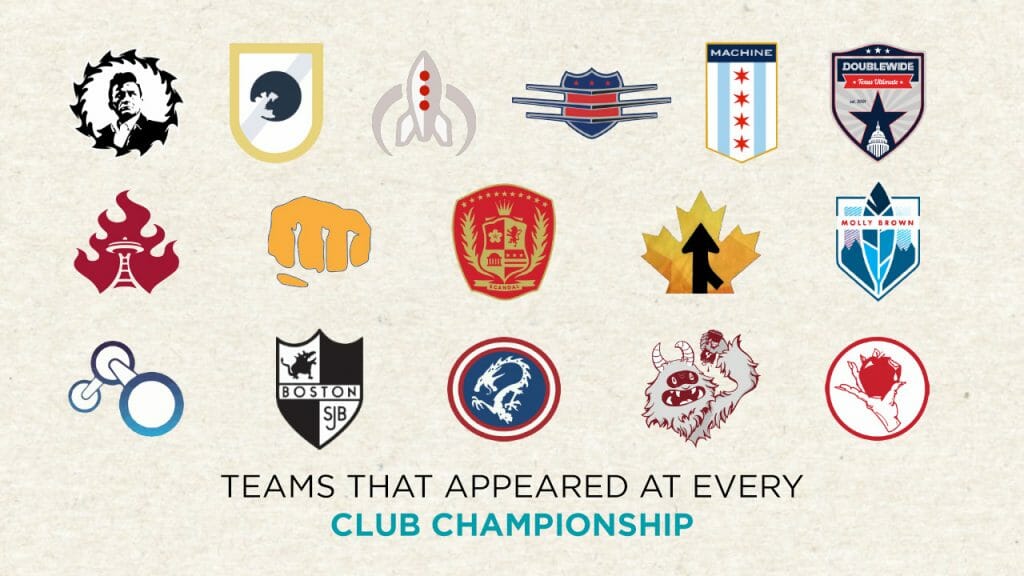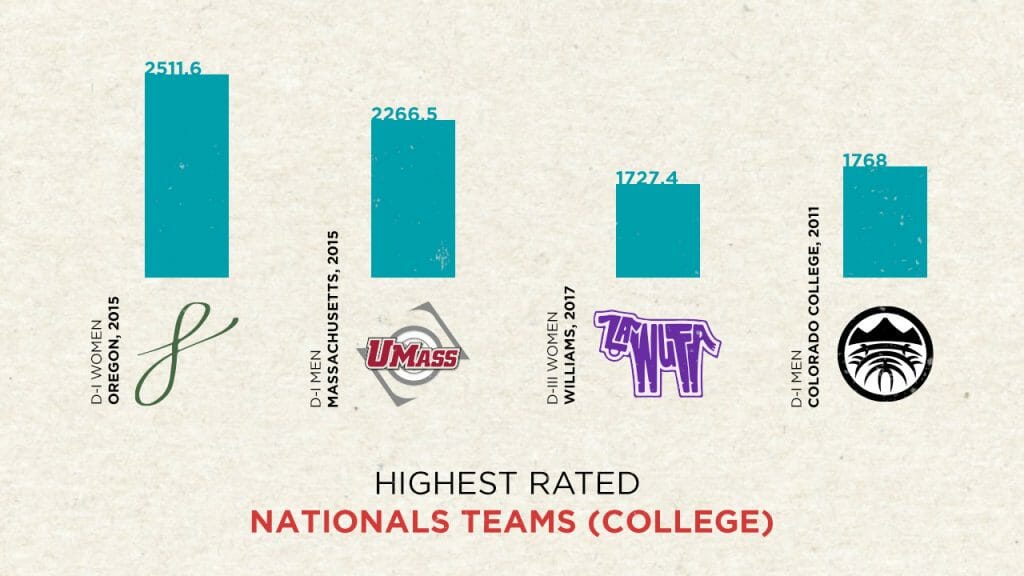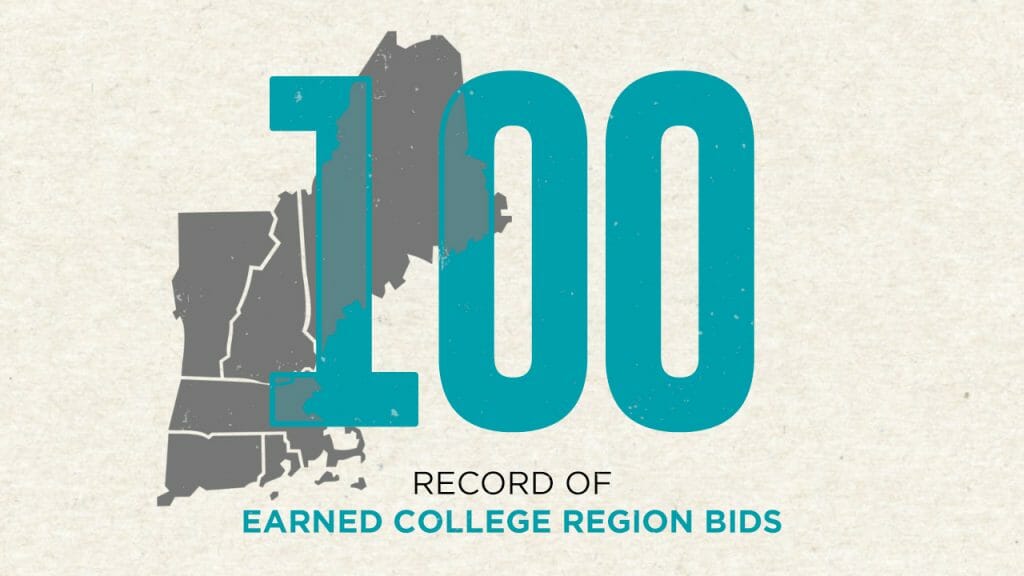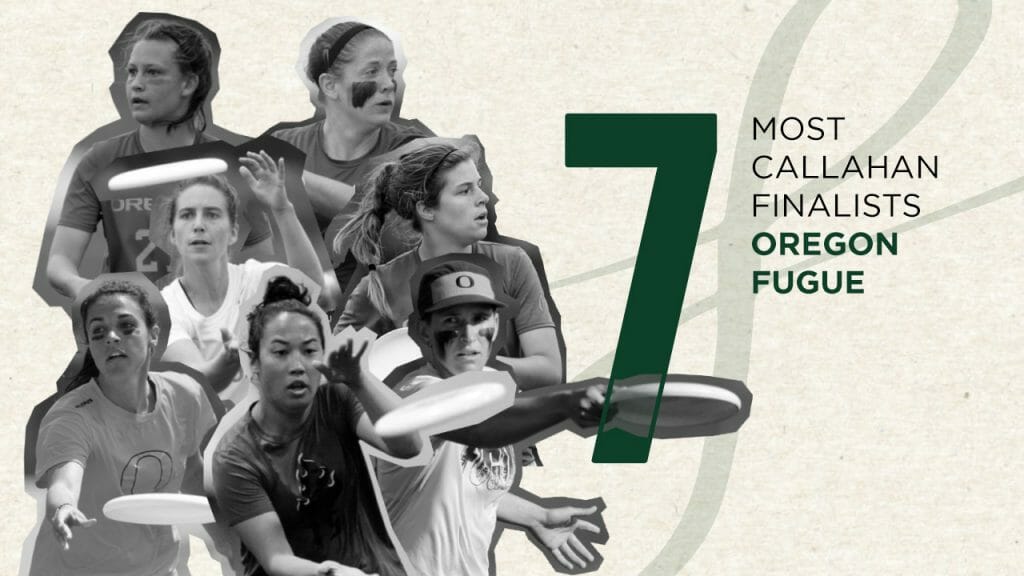Some fun statistics from the decade that was.
December 21, 2020 by in Analysis, Recap with 0 comments
Ultiworld’s “Decade’s Greatest” series is presented by Greatest Bag. Get the greatest bag in ultimate at GreatestBag.com!
We spent much of the beginning of 2020, the first year of a new decade in ultimate, reflecting on the decade prior. 2020 has… blessed us with a lot of additional time to look back. So as this year rounded out, we went hunting through the previous ten years of ultimate data, looking for interesting statistics and facts.
And we found some.
Much of the data curation below was performed by William “Brody” Brotman. You can see more of his archival work on his site. Brody could not have completed this project without the efforts and assistance of UltiPhotos, USA Ultimate, and Matthew Bourland. We are thankful for their work.
Graphics by Marijo Zlatic. All photos courtesy of UltiPhotos.com.
26-23: Record of San Francisco Fury vs. Seattle Riot

In the defining rivalry of the decade — in the US, if not the world — the scoreboard was appropriately close, with San Francisco Fury outscoring Seattle Riot 629 to 622 while achieving a 26-23 record. But Fury’s flush trophy case gives them a much clearer edge.
13-8: Record of Beau Kittredge vs. Kurt Gibson

Beau Kittredge and Kurt Gibson were perhaps the most decorated men’s players of the decade, and their teams faced each other 21 times. Kittredge’s clubs prevailed in 13 of those matchups.
15.6: The Highest Average USAU Club Championships Spirit Score,1 Earned by Chain Lightning
Among teams with five or more Nationals appearances, Atlanta Chain Lightning earned the decade’s highest average club spirit score with a 15.6. Boston Brute Squad (12.8 in women’s) and Philadelphia AMP (12.8 in mixed) were first in their respective divisions. Brute Squad and AMP won titles during this period, while Chain Lightning earned a club championship the year prior to the start of the decade.
18.3: The Highest Average USAU College Nationals Spirit Score, Earned by Grinnell Women’s
The Grinnell women’s team achieved the highest average college spirit score among teams that attended five or more Nationals in their division, an 18.3. Carleton GoP (18.1) led D-III men’s, Harvard (17.2) topped D-I men’s, and California (15.5) was the strongest from D-I women’s.
16: Teams That Appeared At Every USAU Club Championship

16 teams qualified for every USAU Club Championship in the decade:
Atlanta Ozone (W)
Austin Doublewide (M)
Boston Slow White (X)
Boston Brute Squad (W)
Chicago Machine (M)
Denver Molly Brown (W)
Denver Johnny Bravo (M)
Minneapolis Drag’N Thrust (X)
Philadelphia AMP (X)
San Francisco Fury (W)
San Francisco Revolver (M)
Seattle Riot (W)
Raleigh Ring of Fire (M)
Vancouver Traffic (W)
Washington DC Truck Stop (M)
Washington DC Scandal (W)
While four ultimate hubs saw multiple teams from their city qualify all ten years, no community managed the feat across all three divisions.
4: Teams That Appeared At Every USAU D-I College Championship

Just four D-I college programs qualified for every D-I Nationals from 2010 to 2019:
Oregon Ego (M)
Oregon Fugue (W)
Pittsburgh En Sabah Nur (M)
Wisconsin Hodags (M)
No D-III schools accomplished this feat — or even appeared at nine out of ten.
Goodbye to These College Nationals Streaks
Not counting 2020 cancellations against any team’s record, some notable Nationals streaks ended during the decade:
Colorado Mamabird (D-I M), qualifying 1998-2017
Stanford Superfly (D-I W), qualifying 2009-2018
Valparaiso Chicks Hucking Discs (D-III W), qualifying 2010-20172
Claremont Greenshirts (D-III W), qualifying 2011-2018
Oregon Fugue (D-I W), semifinals 2009-2016
Carleton CUT (D-I M), semifinals 2008-20133
Highest Rated USAU College Nationals Teams

Outside of National finish, the only ranking system that existed throughout the entire decade in college ultimate was USAU’s score reporter ratings. Produced by the algorithm that determines bid distribution and is used for seeding, these ratings offer some comparison of which teams in which season had the most success during the season heading into the College Championships.
D-I Women: Oregon 2015, 2511.6 rating
D-I Men: Massachusetts 2015, 2266.5 rating
D-III Women: Williams 2017, 1727.4 rating
D-III Men: Colorado College 2011, 1768 rating
Bid Bullies: Regions With The Most Bids (Club)
The Northeast claimed 88 of the 480 spots at the USAU Club Championships across the three divisions, well above the average of 60. Great Lakes had the least with 34. The Northwest matched that mark in the women’s division alone, topping the tables for bids within a single division.
43: Stolen Club Bids
While college ultimate is famous for its unpredictability, club is perhaps more known for stability. That reputation is matched by the numbers: bids changed hands infrequently at Club Regionals. Forty-three bids were stolen across the club divisions — less than 9% of the total bids — and it won’t come as much of a surprise that the vast majority were in the mixed division, with 28 stolen bids. The men’s division clocked in at ten bid thefts, with the women’s division seeing just five bids stolen in 10 years of postseason play.
Bid Bullies: Regions With The Most Bids (College)

The New England region led all college regions with 100 bids earned throughout the decade, with 62 of those garnered in D-III. That total outstrips the Metro East and Southeast put together; they each earned 48 bids. The Northwest’s 65 bids led D-I.
189: Stolen College Bids
Ever wonder how many bids were won at Regionals by teams that didn’t earn a bid during the regular season from 2010-2019? There were 189 instances of this across all college divisions. Most of those were in D-III men’s, where there were 54 stolen bids, followed by 51 in the D-I men’s division.
The most dangerous regions in each division were:
D-III men’s: New England (10, leading all regions) and South Central (9)
D-I men’s: Southeast (9) and North Central (8)
D-I women’s: Metro East (6), New England (5), and South Central (5)
D-III women’s: Metro East (7) and Ohio Valley (7)
7: Oregon Fugue Callahan Finalists, Leading All College Programs

Oregon Fugue led all D-I programs in the number of finalists for the division’s signature award, including a streak of six straight through the heart of the decade. In men’s, Pittsburgh was head of the class with six total.
58: Number of All-Region Selections by Puget Sound Clearcut
The Puget Sound women’s club secured 58 All-Region spots in the decade, leading D-III women’s as well as all college programs. Meanwhile in D-I, Oregon men and Pittsburgh men each received a category-leading 50 selections, with Oregon women leading their division with 44. D-III men’s was topped by both Claremont and Lewis & Clark, earning 39 selections each.
Women’s
1. Puget Sound (58)
2. St. Olaf (47)
3. Oregon (44)
4. North Carolina (40)
5. Michigan (38)
Men’s
1. Oregon/Pittsburgh (50)
3. Carleton CUT (42)
4. Claremont/Cornell/Lewis & Clark (39)
45: Gold Medals Won by US National Teams in International Championship Events
There were 55 gold medals available to national teams this decade across 16 world championship events — World Games, WUGC, WCBU, WU24, and WJUC — and the US captured 45 of them, amassing a record of 435-16.4
From 2010-2014, spirit scores were on a scale of 0 to 5 before being transitioned to a scale to 20. For those early scores, we multiplied their value by four. ↩
At the time their streak was broken, they were the last D-III program to have qualified for every championship event since the division was founded in 2010. ↩
North Carolina Darkside has an active six-year semifinals streak going to match this all-time record in the division, shared with UC Santa Barbara Black Tide. ↩
Records in both the Men’s and Women’s Masters divisions at WUGC 2016 and 2012, as well as all records from all divisions at WCBU 2011, could not be confirmed and are not included. ↩